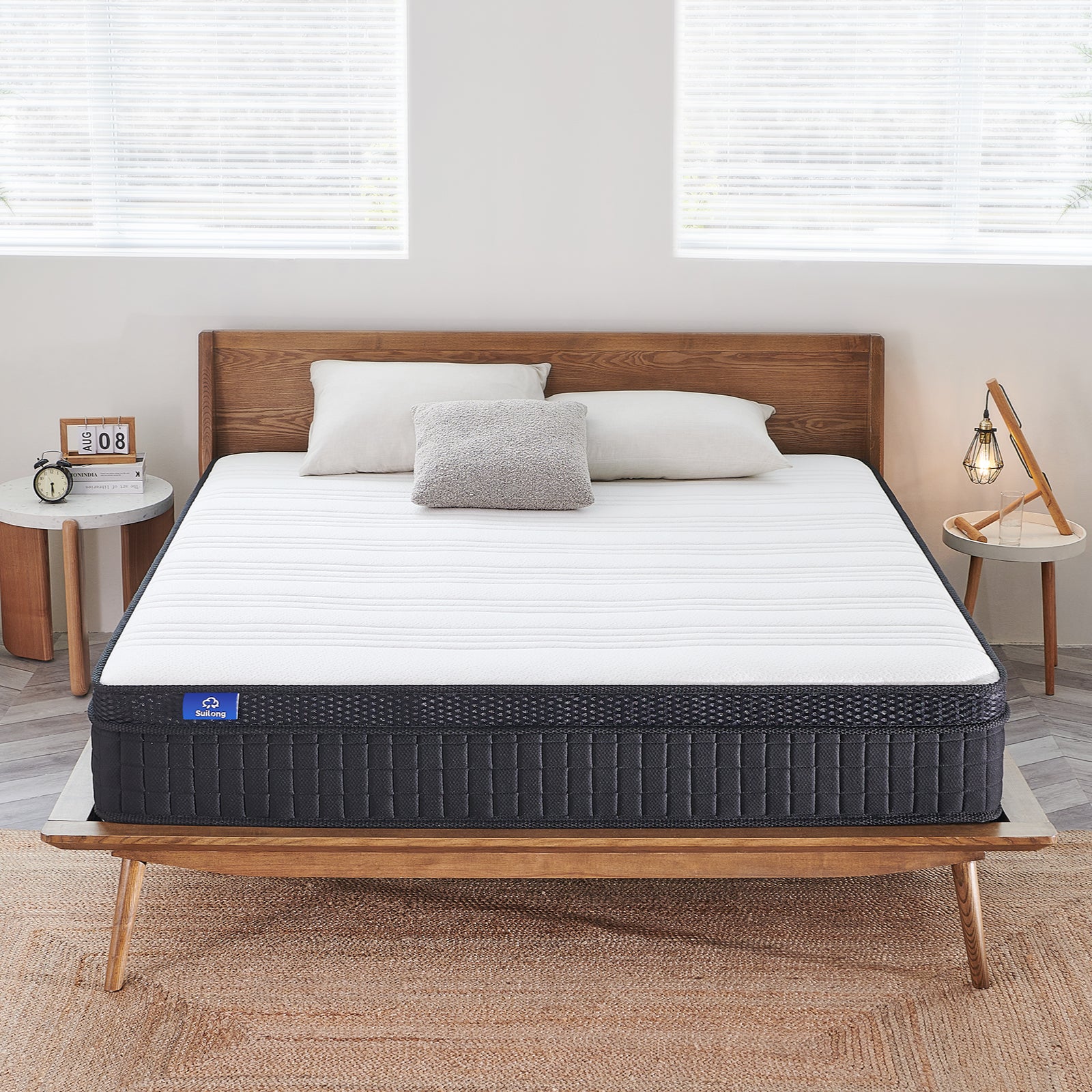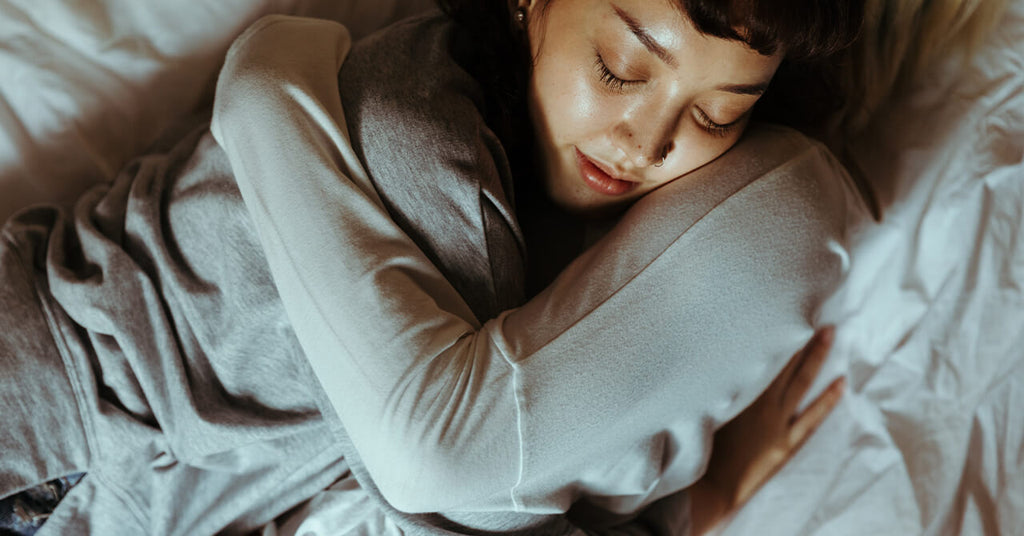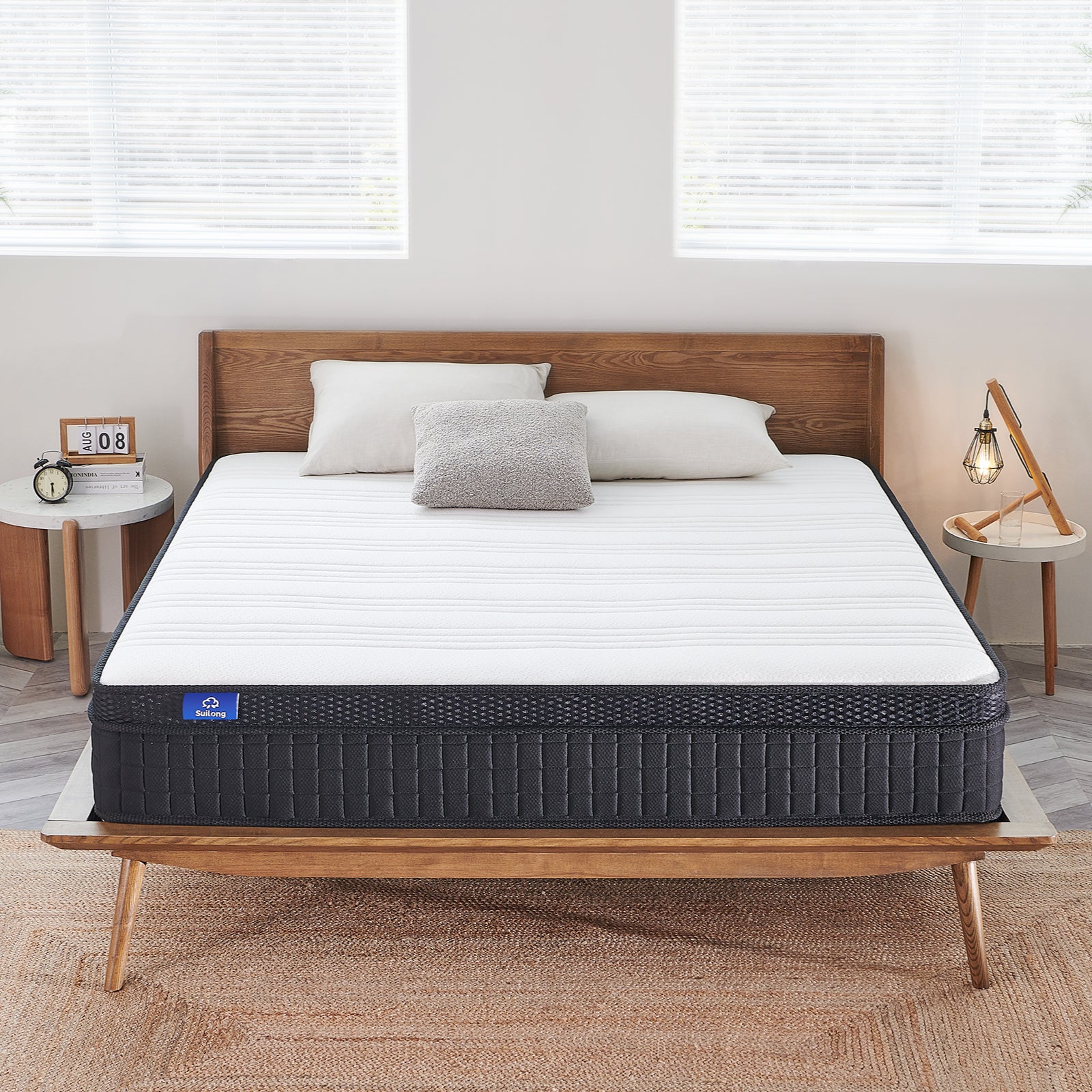Best Sleeping Position For Sleep Apnea

Explore the comprehensive guide to understanding Sleep Apnea, where we dive deep into its types, symptoms, risks, and the crucial role sleep positions play.
1. Introduction to Sleep Apnea
Definition and Classification
Sleep apnea, a common sleep disorder. During sleep, the patient's breathing repeatedly pauses and becomes shallow. Depending on the cause and manifestation, this symptom can be categorized into three types:
- Obstructive Sleep Apnea (OSA): A blockage of the airway caused by relaxation of the throat muscles.
- Central Sleep Apnea (CSA): The brain does not send the correct signals to the breathing muscles.
- Complex Sleep Apnea: A mixture of OSA and CSA.
Common Symptoms and Risks
Symptoms of sleep apnea include:
- Nocturnal snoring: High-volume, irregular snoring is a telltale sign of the disorder.
- Prolonged pauses in breathing: Often observed by a sleep partner.
- Sudden awakenings during the night: The patient may feel choked or short of breath.
- Daytime sleepiness: Daytime fatigue due to decreased quality of sleep at night.
- Long-term untreated sleep apnea can increase the risk of heart disease, stroke and high blood pressure, and even affect life expectancy.
The link between sleeping position and apnea
Sleeping position has a huge impact on sleep apnea. The right sleeping position can alleviate the symptoms of sleep apnea by reducing obstruction of the airway and difficulty in breathing. Below is a breakdown of the various sleeping positions:
- Lying on the back: While lying on the back keeps the spine natural, the tongue may slide to the back of the throat and aggravate airway obstruction. Therefore, this sleeping position is not ideal for OSA patients.
- Prone: While prone lying can reduce airway obstruction, prolonged prone lying is detrimental to the cervical spine and spinal column and is not recommended.
- Side-lying: Side-lying is considered the best sleeping position for OSA relief, as it reduces airway obstruction, improves breathing, and reduces snoring.
Choosing the best sleeping position is one of the first steps in improving sleep apnea, but there are many other ways to treat it, including the use of medical devices, changing lifestyle habits, and even undergoing surgery. Everyone is different, so you need to choose the right treatment for your individual symptoms and constitution.
2. What sleeping positions may aggravate apnea?
The relationship between lying on the back and apnea
- Increased gravity: When I choose to lie on my back, my tongue and jaw tend to recede due to gravity, which can lead to a narrowing of the airway and aggravate apnea.
- Increased pressure on the larynx: When lying on my back, the pressure on the larynx also increases, further restricting breathing.
- Solution: To avoid the problems associated with lying on my back, I can try using a special pillow to raise my head, thus reducing the risk of airway obstruction.
Risks of prone lying
- Prone restricts thoracic movement: Prone resting puts pressure on my chest and restricts normal thoracic movement, which affects breathing.
- Obstructed airway: Having my face pressed into the pillow may cause my airway to become obstructed.
- Solution: If I am used to lying prone, I can place a small pillow or towel roll under my face to keep my airway open.
Mixed Sleeping Positions to Avoid
- Unstable Sleeping Positions: Mixed sleeping positions mean that I often change my sleeping position during sleep, which can lead to irregular breathing.
- Intermittent airway obstruction: In mixed sleeping positions, the airway may be somewhat obstructed from time to time.
- Solution: Use a body support system, such as a sleep belt or body pillow, to maintain a stable sleeping position to minimize breathing problems associated with changes in sleeping position.
Tip:
- Adjust your sleeping position gradually and gradually adapt to the new sleeping position to minimize discomfort.
- If possible, it is best to make sleeping position adjustments under the guidance of a professional.
- Choosing the right bedding is also key to improving your sleeping position and breathing.
3. Sleeping Positions That Help Relieve Apnea
Finding the right sleeping position is crucial in your quest to find relief from sleep apnea. Let me explain the advantages of each recommended sleeping position in more detail.
3.1 Benefits of Side Sleeping
Reduces the risk of airway obstruction:
Sleeping on your side reduces the risk of respiratory obstruction by decreasing the pressure of the tongue and soft palate on the airway. It provides a more open passage for the respiratory system and helps to achieve more stable breathing.
Reduced snoring:
Most people experience significant improvement in snoring when lying on their side. Snoring not only affects the quality of sleep, but may also aggravate apnea.
Reduces pressure on the heart:
Sleeping on the side can reduce the pressure on the heart, help improve blood circulation and provide a healthier sleeping environment for the body.
3.2 Advantages of sleeping with the head elevated
Prevents reflux:
Sleeping with the head elevated prevents stomach acid from refluxing into the esophagus, which not only avoids discomfort caused by reflux, but also reduces the likelihood of respiratory tract irritation.
Promote air circulation:
This sleeping position helps air to flow more freely through the airways, reducing the symptoms of dyspnea and apnea.
Reduces fall of airway tissue:
Elevation of the head reduces the drooping and buildup of tissues around the airway, thus keeping the airway open.
3.3 Why these sleeping positions can reduce apnea
Keeping the airway open:
As mentioned earlier, these recommended sleeping positions help reduce obstruction and blockage of the airways.
Improve oxygen supply:
An open airway means a more consistent supply of oxygen, which is important in relieving apnea symptoms.
Promote deep sleep:
The right sleeping position can help you enter the deeper stages of sleep more quickly, resulting in better quality sleep.
In conclusion, understanding and adopting the right sleeping position is a key part of effective sleep apnea relief. Hopefully, by adjusting and optimizing your sleeping position, everyone can enjoy a restful, comfortable night.
4. Practical tips to improve your sleeping position
In the process of improving your sleeping position, I have found some practical tips that can effectively help us achieve the desired results.
Choose the right pillow and mattress
Choose the right pillow
- Choose a pillow with a moderate height, not too high and not too low, and keep your neck naturally curved.
- Understand the various materials of pillows, such as latex pillows, memory foam pillows, etc., and choose according to personal comfort and needs.
Choose a suitable mattress
- Focus on the comfort level of mattress, it should not be too hard or too soft, and should be able to support the natural curve of the spine.
- Research the material and structure of the mattress, such as twin memory foam mattress, latex mattress, etc., and choose the type that suits you.
Stretch properly before bedtime
Perform simple stretches
- Do some easy stretches such as lower back stretches and neck rotations to relax tight muscles.
- Avoid strenuous and intense exercises to prevent your body from getting too excited and interfering with your sleep.
Breathing exercises
- Learn deep and slow breathing techniques to help your body relax and prepare for deep sleep.
- Using sleep aids
- Learn about different assistive devices
- Explore different sleep aids such as anti-snoring devices and ventilators to learn what they do and how to use them.
Try and adapt
- Choose an assistive device that suits your needs and conditions, and use it properly under the guidance of a professional.
- Give yourself some time to gradually adapt to the equipment and do not give up easily.
- By utilizing the above tips and methods in a comprehensive manner, I believe you can find a suitable sleeping position for yourself and improve your sleep apnea symptoms effectively.
5. Natural ways to improve apnea
Lifestyle Adjustment
As a patient who has faced sleep apnea problems for a long time, I deeply understand the importance of making lifestyle changes. Here are some of the strategies I've found to be significant and effective:
- Maintain a regular routine: Maintaining a regular bedtime and wake-up time helps to adjust the body's biological clock and reduce the symptoms of sleep apnea.
- Control your weight: Excessive weight is one of the major contributing factors to apnea. Losing weight not only relieves apnea, but also helps improve overall quality of life.
- Quit Smoking and Limit Alcohol: Both tobacco and alcohol can negatively affect the respiratory system. Quitting smoking and limiting alcohol intake are necessary steps to prevent apnea.
The Positive Effects of Diet and Exercise
As part of the effort to improve the symptoms of apnea, I strongly believe that a proper diet and moderate exercise play an integral role in the process.
- Balanced diet: Choose foods that are nutritionally balanced, especially foods rich in vitamin D and magnesium, which can have a positive effect on improving apnea.
- Moderate exercise: Increasing aerobic exercise and strength training can help reduce weight and strengthen the breathing muscles, thus relieving the symptoms of apnea.
Other non-drug, non-surgical treatment options
As an apnea patient actively looking for solutions, I have found several non-drug, non-surgical treatment options in my practice.
- Oral appliances: Using an oral appliance designed for sleep apnea patients can be effective in keeping the airway open and alleviating the symptoms of apnea.
- Breathing exercises: Breathing exercises can enhance the strength and endurance of the breathing muscles, which is helpful in relieving the symptoms of apnea.
- Sleep position adjustment: By choosing the right sleep position, such as sleeping on the side or elevating the head, the symptoms of apnea can be effectively relieved.
6. Importance of Apnea Prevention
Long-term benefits of prevention
Sleep apnea not only affects the quality of sleep, but can also lead to a range of long-term health problems, including heart disease, diabetes and high blood pressure. Therefore, the importance of preventing sleep apnea cannot be overstated.
- Reduces the burden on the body: Preventing apnea reduces the burden on the heart and lungs and improves breathing efficiency.
- Improve quality of sleep: By taking preventive measures, you can enjoy a deeper sleep, thus improving your quality of life.
- Reduce long-term health risks: Preventing sleep apnea also helps reduce the risk of developing related diseases.
Preventive measures and how to implement them
Prevention is always better than cure. To effectively prevent sleep apnea, you can start with the following:
- Maintaining a healthy weight: Being overweight is often one of the main factors leading to apnea. Maintaining a healthy weight through proper diet and regular exercise is essential.
- Avoid overexertion: Make sure you get enough rest and sleep every day, and avoid staying up late and overexerting yourself.
- Avoid alcohol and tobacco: Smoking and alcohol consumption can aggravate apnea symptoms, and abstaining from smoking and alcohol is an effective means of preventing apnea.
- Regular checkups: Conduct regular sleep quality checkups and apnea screenings for early detection and treatment.
Strategies for Maintaining Healthy Sleep
To maintain healthy sleep, you need to do the following:
- Maintain a good sleeping environment: Make sure your bedroom is well ventilated and the temperature is moderate. It is also important to use comfortable bedding and blackout curtains.
- Regular routine: Try to go to bed and wake up at the same time every day to get into a good routine.
- Reduce nighttime water intake: Drinking too much water at night may result in multiple awakenings during the night, which can affect sleep quality.
- Relaxation: A moderate amount of relaxation before bed, such as reading, listening to music or deep breathing exercises, can help improve sleep quality.
7. Suilong Mattress: The Choice for Apnea Relief
When it comes to the Suilong Nimbus 12 Inch Hybrid Mattress, its features make it an ideal choice for sleep apnea relief.
- Medium Firmness: This mattress offers a medium firmness that provides enough support while remaining comfortable and able to accommodate a wide range of sleeping positions.
- Excellent Temperature Control: Gel-containing memory foam helps regulate body temperature, keeping you cool and comfortable throughout the night.
- Anti-allergy design: Manufactured with anti-allergy materials, it is suitable for people with a history of allergies or sensitivities.
- Simple Installation: The mattress comes in a compressed and curled package for easy transportation and installation.

Suilong Nimbus
12 Inch Hybrid Mattress
Look no further than the Suilong Nimbus 12-inch Hybrid Mattress.
Buy NowHow to buy the right mattress
Choosing a mattress that relieves apnea symptoms is crucial.
- Focus on firmness: Look for a mattress that is neither too soft nor too firm, and that provides adequate support for your back and spine.
- Pay attention to materials: Memory foam and latex mattresses often provide better support and comfort.
- Consider individual needs: If you have specific health issues or preferences, you need to choose a mattress that meets those needs.
How Suilong mattresses can help relieve apnea symptoms
Suilong mattresses are designed and made with apnea relief in mind.
- Supportive: Suilong mattresses provide firm support to help keep the airways open and alleviate the symptoms of apnea.
- Promotes Good Sleeping Posture: By encouraging the user to sleep in the correct position, Suilong mattresses can help reduce apnea.
- Provides Comfort: A comfortable mattress provides a good night's sleep, helping to alleviate the symptoms associated with apnea.
Empower your sleep health by acknowledging Sleep Apnea signs and adopting the advised sleep positions, offering you a journey towards restful nights ahead.
FAQs
Q: What are the common symptoms of Sleep Apnea?
A: Common symptoms include loud and irregular snoring, long pauses in breathing, choking or gasping for air during sleep, and excessive daytime fatigue and sleepiness.
Q: How does sleep position affect Sleep Apnea?
A: Sleep position significantly influences Sleep Apnea. While back sleeping might worsen it due to the tongue blocking the airway, side sleeping is often recommended to alleviate the condition by promoting unobstructed breathing.
Q: Can lifestyle changes help in managing Sleep Apnea?
A: Yes, lifestyle modifications like losing weight, avoiding alcohol and sedatives, quitting smoking, and regular exercise can significantly improve or even eliminate Sleep Apnea symptoms in some individuals.
Q: Is it necessary to use medical devices for Sleep Apnea?
A: While devices like CPAP (Continuous Positive Airway Pressure) are common and effective treatments, not everyone with Sleep Apnea requires them. Lifestyle changes and sleep position adjustments might suffice for mild cases.
Q: Can Sleep Apnea be cured completely?
A: While there's no universal "cure" for Sleep Apnea, various treatment options, including lifestyle changes, medical devices, and surgery, can effectively manage and significantly alleviate the condition, improving the quality of life for sufferers.
-
Posted in
Buyer's Guide, Choosing the Right Mattress, Lifestyle, Shopping Tips, Side Sleepers, Sleep Experts, sleep health, sleep position, Sleep Tips, sleeping positions, the type of mattress



















